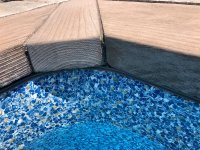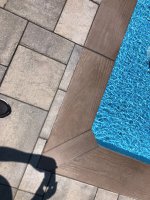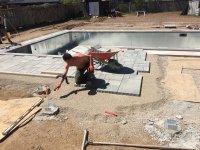I am having a contractor re-do the polymeric sand in our pool deck, but the original pool contractor (who did both but is now long gone) used polymeric sand between the coping stones (essentially really large heavy coloured paving stones by techo bloc, the blocks have a purposeful consistent gap built into the stones). I personally hate it (in the coping) because it molds and goes green and I am assuming now needs to be replaced every 5 or so years, plus it will wash some sand into the pool each spring as the polymeric sand (essentially sand and hard jello) fails.
But I wonder if the polymeric sand solution is still worth my hating it vs. having my contractor do some other coping mortar treatment? And what alternatives should I consider before going with the contractor's recommendation? (Non-pool building but professional contractor that does have patio stone experience.)
Thank you for any insight or experiential opinions you can provide!
But I wonder if the polymeric sand solution is still worth my hating it vs. having my contractor do some other coping mortar treatment? And what alternatives should I consider before going with the contractor's recommendation? (Non-pool building but professional contractor that does have patio stone experience.)
Thank you for any insight or experiential opinions you can provide!




